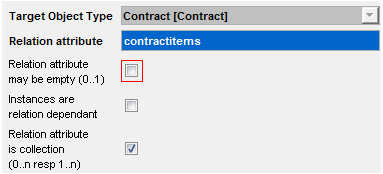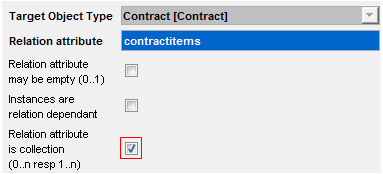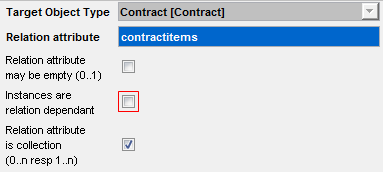Example: Contract Item - Contract Relation in Detail
In this topic, the existing Contract Item - Contract relation is analyzed in detail. The example of this relation is also used in the 'Instances are Relation Dependent' topic where this setting and the relation are explained with another aspects.
- The Possible Scenarios example then uses hypothetical settings to analyze the impact of alternative relation definitions.
- The Examples section contains some more reference examples.
Example: Contract Item is part of Contract
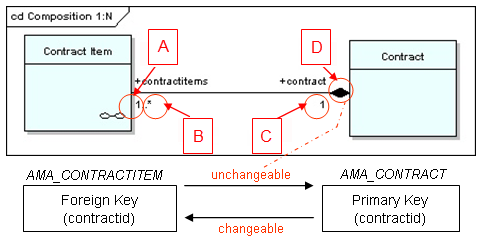
Attribute |
Setting in Valuemation |
Meaning |
|
A (Target) |
|
A contract must have at least one contract item. |
|
B (Target) |
|
A contract may have more than one contract item. |
|
C (Source) |
|
A contract item must always belong to a contract. |
|
D = unchangeable (Source) |
|
A contract item can only exist when it belongs to a particular contract and it cannot be assigned to a different one. |
|
changeable |
|
Contract items may be changed, added or deleted within an existing contract. |
|
|
|||
Mutual correspondence between the analytical view and the Relation Customizer GUI
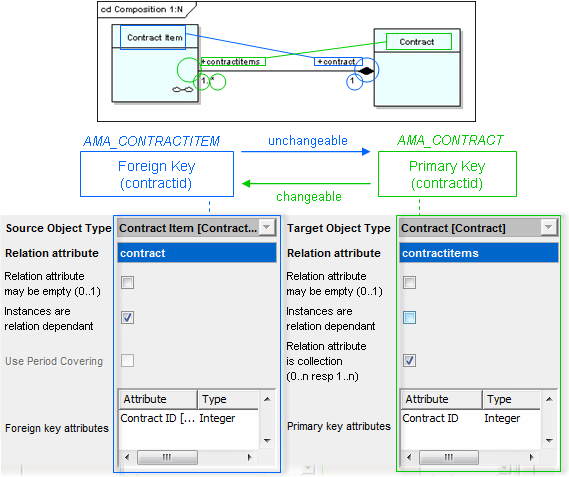
Example Summary:
- In the Contract Item - Contract relation, the Contract item is a source object type (on the left side) and the Contract is the target object type (on the right side).
- The relation means that a Contractitem references exactly 1 Contract (minimum target cardinality = maximum target cardinality = 1).
- A Contract has at least 1 Contract item but can have more of them (minimum source cardinality = 1, maximum source cardinality. = N). This can be seen in the relationship attributes. A Contractitem has an attribute 'contract' which references exactly one Contract, and a Contract has an attribute 'contractitems' which is a non-empty collection of Contractitems.
